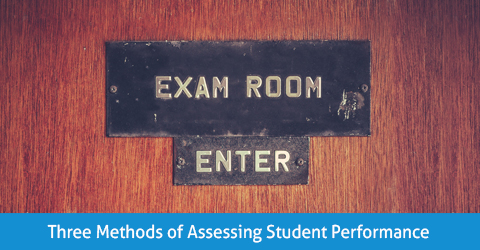Assessing Student Performance
Student performance is key to your tutoring business. Therefore, following the initial evaluation of a student’s needs, you will need to track improvement. That is to say, your tutor will be assessing the progress and performance of that learner.
Additionally, the tutor will be able to determine whether the student has learned the material covered in the session. In other words providing information on where to begin instruction in the next session.
For example, here are a few methods in assessing student performance:
Observations
Student performance observation is a simple way to determine what a student does when working on an assignment. For instance, the tutor gives the student a task to complete and then watches the student while they work.
The tutor can note the following:
- Does he/she use an organized strategic approach or is the approach trial and error?
- What portions of the work are done correctly or incorrectly?
- Is there any evidence of frustration or confusion in completing the work?
- How well is the student able to maintain focus on the task?
- Does the student recheck his/her work for errors?
Student performance – Think Alouds
A think-aloud is similar to an observation except that with this method the student thinks out loud. That is to say, the student verbalizes what he/she is doing while performing a task. Most importantly the tutor should not interject anything into the student performance, even if the student is proceeding incorrectly.
The think-aloud allows the tutor to:
- Understand how the student is approaching a particular task or problem.
- Find out exactly where in the process the student is experiencing difficulties.
- Determine what concepts the student is missing.
- Uncover any misconceptions the student might have about the topic.
You could consider using think alouds with reading material. For example, you can have the student stop at points in the reading to talk about what she is thinking. Additionally, what strategies is the student using to understand and interpret materials.
End of Session Summary
At the end of each tutoring session, tutors can ask a student to briefly summarize what they have learned today. Most importantly, this should only take a minute or two and will let the tutor know how well a student has understood the material. Additionally, this will help your tutor plan for the next session. So, the end-of-session summary is valuable for both tutor and student.
Author’s Note
Today’s article on assessing student performance is based on portions of the tutor training programs provided by Crossroads of Learning. Crossroads of Learning provides professional development for tutors, trainers or academic coaches. Importantly, courses are available online or a train-the-trainer/workbook program.
All courses and materials articulate with the certification requirements of the National Tutoring Association.
For more information, visit the website at crossroadsoflearning.com
Oases Online tutoring tracking software can be used for assessing student performance. This includes, creating learning objectives and recording tutor observations and session progress summaries. Additionally, Oases produces automatic student learning and progress reports.
Use Oases Online to manage your tutoring business – Book a Demonstration below.
Interested in Oases for your Tutoring Business?
Love it and want it now?
Create your Oases database!

